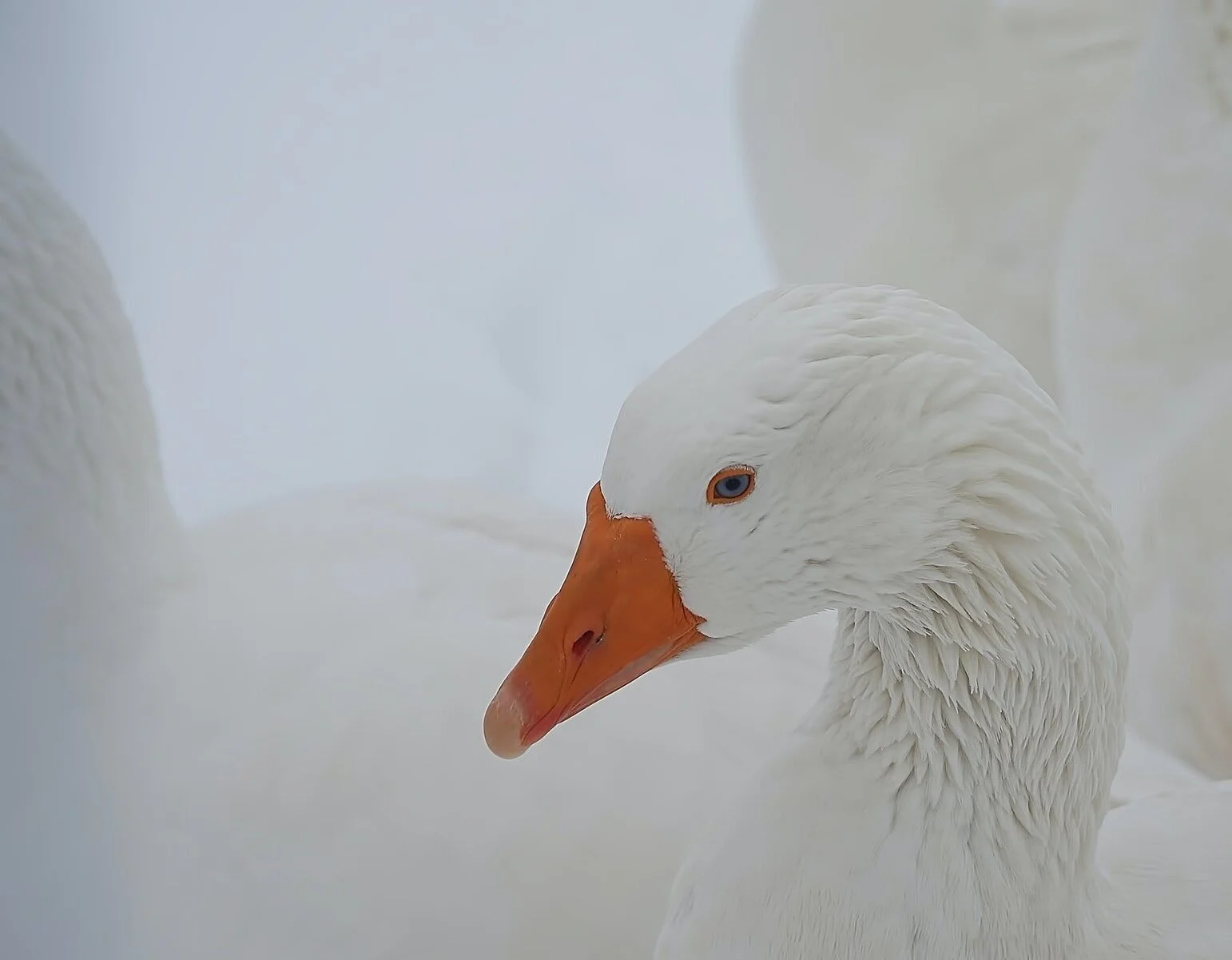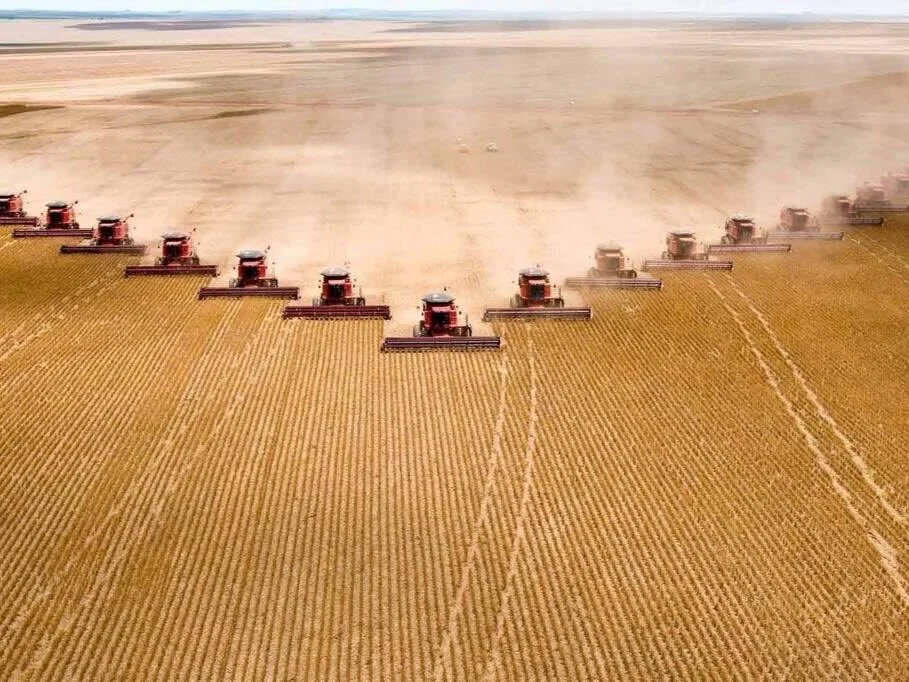Issues in the down supply chain
Down is never ethical. It is either ripped from live birds or their carcasses.
Ducks and geese
The two bird species who suffer and are eventually slaughtered for down, these animals are sensitive and sentient. Geese choose one partner for life and mourn their partner’s death. Ducks bob their heads up and down when they’re happy, and love to socialise.
Painful live plucking,
a widely discussed cruelty
Violence for profit
In some cases, ducks and geese are plucked of their feathers for down products like parka jackets while they are alive. This is so that each time their feathers grow back, they can be painfully plucked out again.
Live plucking can cause skin tearing [PDF 2MB], wing hanging (a pain-caused posture change) and even death by severe injury. Birds cry out in pain during this process.
Each time these birds are caught, carried and restrained for feather ‘harvest’, they are often treated roughly and injured. Birds often dislocate and break their bones [PDF 4.8MB], sometimes even suffocating as they attempt to flee from harvesters in fear.
False claims of cruelty-free feather collection
Some farms claim they ‘collect’ feathers from naturally moulting birds, thus making the process painless. This would only be possible if birds were confined to factory farms as feathers would blow away outside, and it’s likely the birds would soil the feathers.
Furthermore, the supposedly ‘loosened’ moulting feathers on birds’ chests are often still plucked. Birds will not all moult at the exact same time, so some will be painfully plucked and endure the same injuries during stressful ‘harvesting’.
Images: Pained, live plucked birds / Gabriel Paun, Four Paws
Some down comes from birds who are cruelly force-fed for foie gras.
In foie gras production, birds have metal tubes shoved down their oesophagus as they are fed huge amounts of corn and fat. These poor birds are confined to small areas or cages. The purpose of this torturous treatment is to enlarge the birds’ livers, which are eaten as food considered a ‘delicacy’.
Birds on these farms have been documented dead, having choked on their own vomit. Other birds have been recorded with injured and malformed beaks, or sprayed in blood from self-mutilation or fighting.
Image: Animal Equality
Factory farming
Ducks and geese are aquatic birds. Ducks must spend a large portion of their day on the water to be healthy and happy. Their legs are naturally more weak, as they are not supposed to carry their body weight for extended periods.
Farmed birds are confined in cramped conditions. They are denied access to water either entirely or most of the time, crippling them as they are forced to hold their own weight.
Image: An Australian duck factory farm / Animal Liberation via Farm Transparency Project Repository
A lack of legal protection
80% of down comes from China, where there are no nationwide laws prohibiting violence against animals.
Across the world, including in Australia, America and the UK, farmed animals are exempt from most or all animal protection legislation, making most cruelty totally legal if it is deemed ‘necessary’ to profitable industries.
Image: An Australian duck factory farm / Animal Liberation via Farm Transparency Project Repository
‘Humane’ standards fail birds.
Standards like the ‘Responsible Down Standard’ (RDS) claim that they certify down feathers from farms that ‘respect the humane treatment’ of ducks and geese, and do not cause unnecessary harm to animals.
However, some companies that claim to be RDS-certified have continued to live-pluck ducks and geese on their farms. According to an investigation by PETA, suppliers admitted to live-plucking in secret and falsely advertising that plucking occurs after slaughter, because “nobody dares to buy it if you say it’s live-plucked”.
In addition, RDS inspections take place only once a year and are announced in advance.
Lastly, the down industry is connected to the meat industry, so all ducks and geese are slaughtered at a fraction of their natural lifespan- hardly a ‘humane’ outcome.
Image: a supposedly ‘humane’ down supply chain, via RDS.
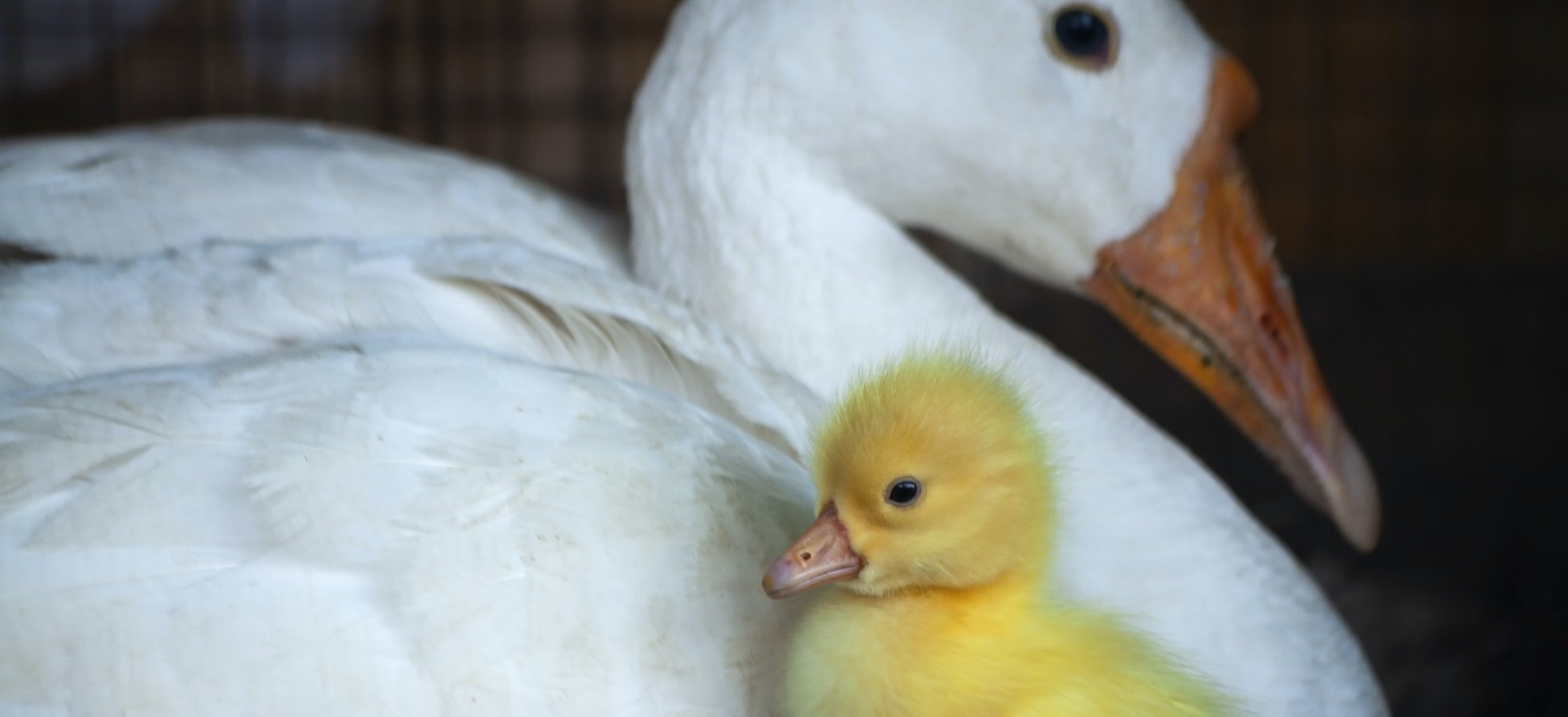
Naturally, ducks and geese can live for many years, even over a decade. In farming systems, they are killed at only a few weeks or few months old.
As with all animal agriculture, farming ducks and geese has serious negative environmental implications.
Eutrophication
Factory farms full of animals like ducks and geese cause high levels of nutrient run-off [PDF 240KB]. The huge amounts of phosphorus-rich faeces that come out of these places can leech into waterways and cause eutrophication.
Eutrophication is the over-enrichment of water with nutrients and minerals, leading to excessive algae growth that makes water appear green. As a result, water can be depleted of oxygen, causing ‘dead zones’ and killing aquatic life.
Image: Eutrophication by factory farms / The Guardian
Land clearing
When we farm animals, we must also farm their food. Ducks and geese are fed cereal grains inside factory farms. 36% [PDF 1.1MB] of crop calories grown around the world go to farmed animals, rather than to humans. This requires a lot of land.
This process has been shown to be inefficient. Moving away from animal-derived materials and foods would mean less land cleared for crop feed. This land could be used to feed humans and largely be rewilded, assisting in carbon sequestration.
Image: Less crops are grown in animal-free production.
Harming the environment to harm birds also harms humans.
Global hunger
When we waste land and resources by growing large amounts of crops for farmed animals - land that could feed humans and be rewilded to protect the planet - we also exacerbate global hunger.
About 815 million people in the world suffer from chronic undernourishment. The agricultural practices we choose to support or avoid can play a part in solving this crisis. It doesn’t need to be this way.
Image: An Australian duck factory farm and the automatic grain-feeders birds eat from during their short lives / Animal Liberation / Farm Transparency Project Repository
Health risks and slaughterhouses
Without slaughterhouses, there would be no down feather industry. The wastewater that comes out of slaughterhouses killing geese and ducks poses health risks [PDF 2.2MB] to the communities surrounding them.
One poultry slaughterhouse that ended up being sued by Food and Water Watch dumped so much wastewater, manure, organs and blood that the people surrounding it suffered immensely as a result. Gastrointestinal illnesses, birth defects, epilepsy and even miscarriages were recorded.
Well water of homes close to the slaughterhouse had dangerous levels of nitrates, which are known to increase the risk of some forms of cancer.
Image: Wastewater at the Yad Hanna Wastewater Treatment Plant bloodied by detritus from slaughterhouses in the city of Tulkarem / Alon Heyman
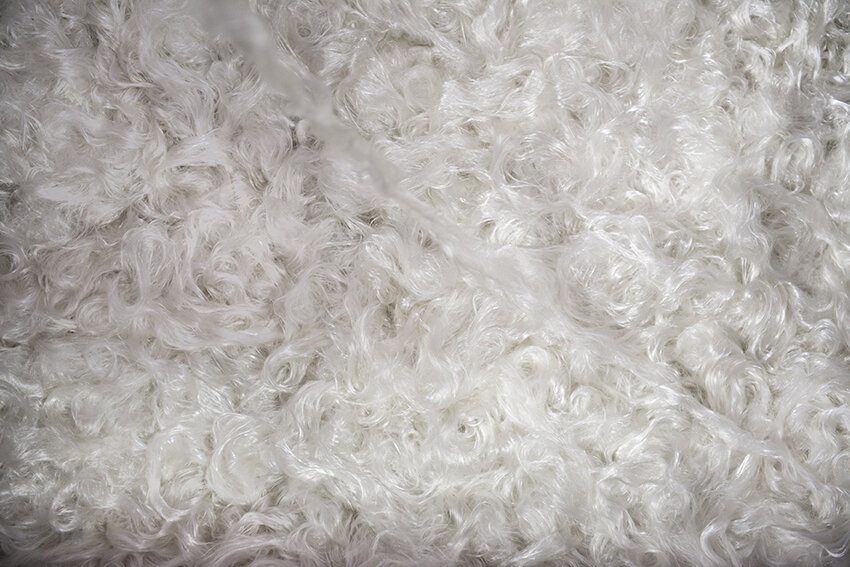
Even in the coldest climates, technological fibre is more warm and offers an ethical alternative to feathers pulled from birds.
Want to keep learning?
-
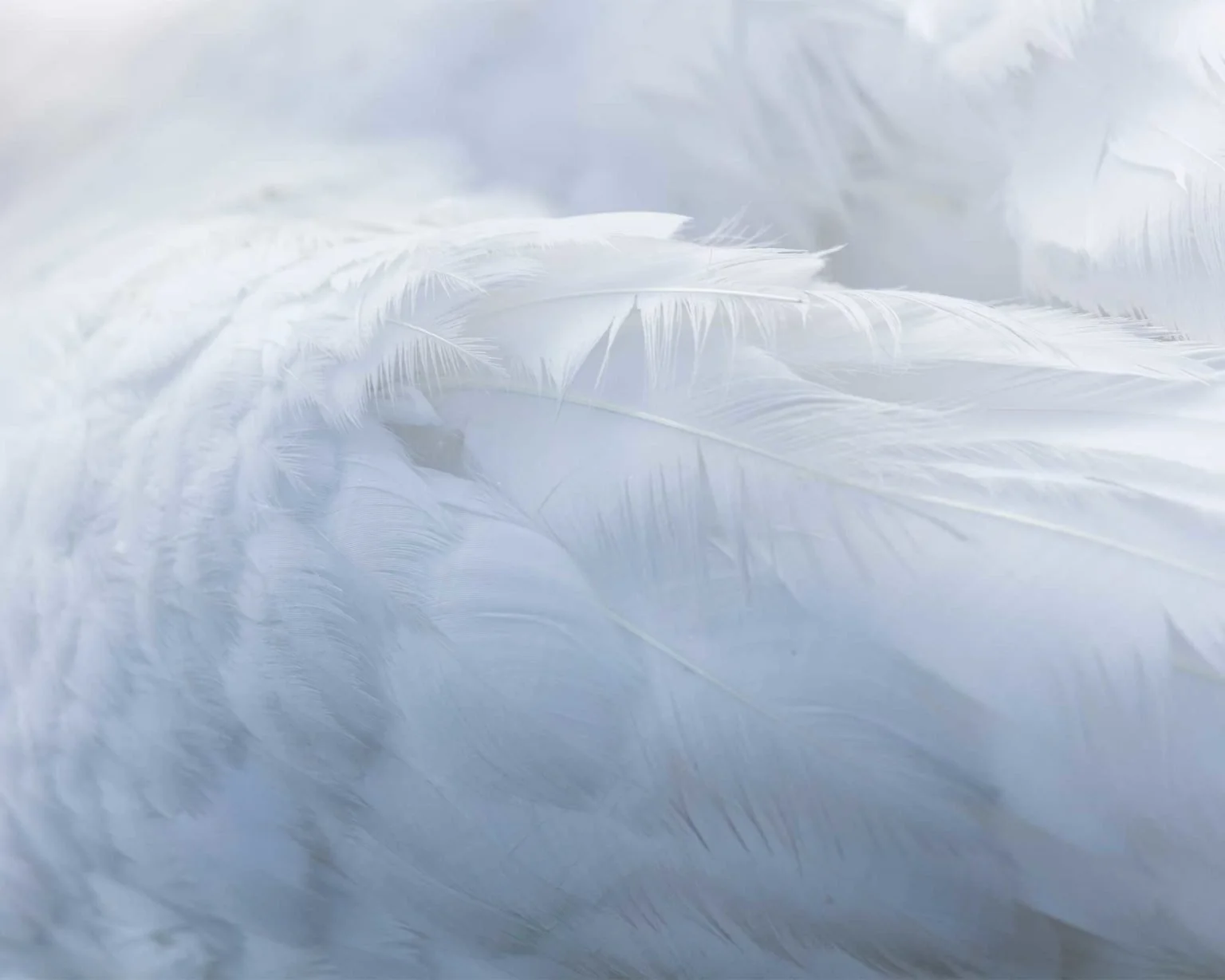
Good On You material guides
We worked with renowned ethical and sustainable fashion education source Good On You to improve their animal-derived material guides.
-
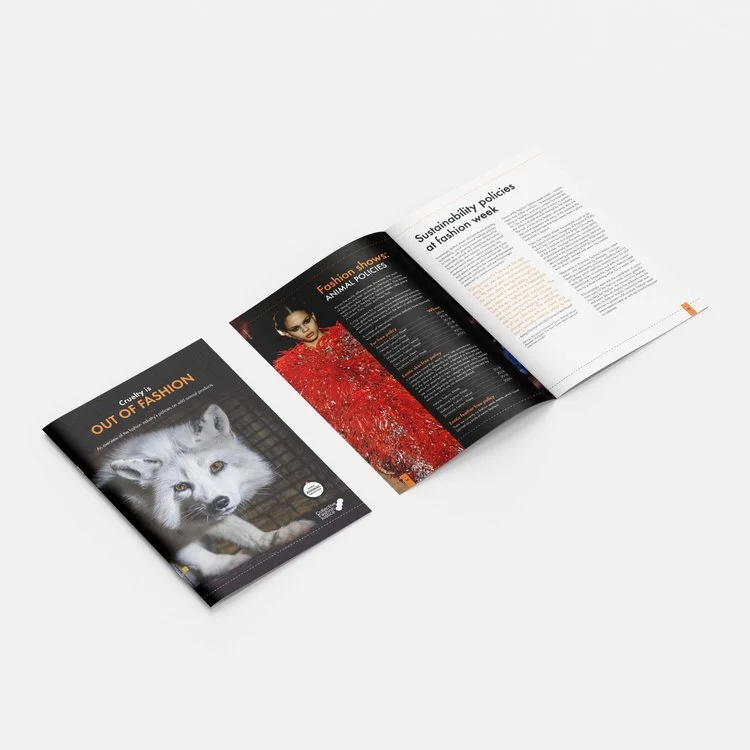
Cruelty is out of fashion report
An overview of the fashion industry’s laws and policies on wild animal products, from Collective Fashion Justice and World Animal Protection.
-
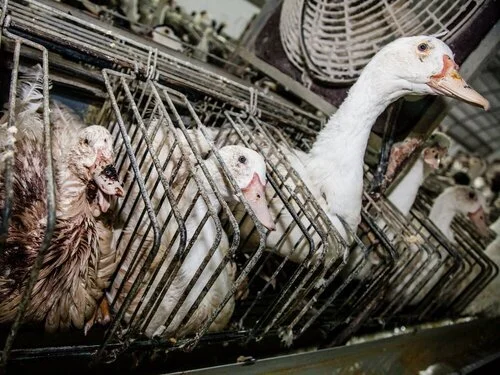
#WhoKilledForMyClothes
Animal-derived fashion materials would not exist without farm workers, slaughterhouse workers, or animals and their bodies themselves.
